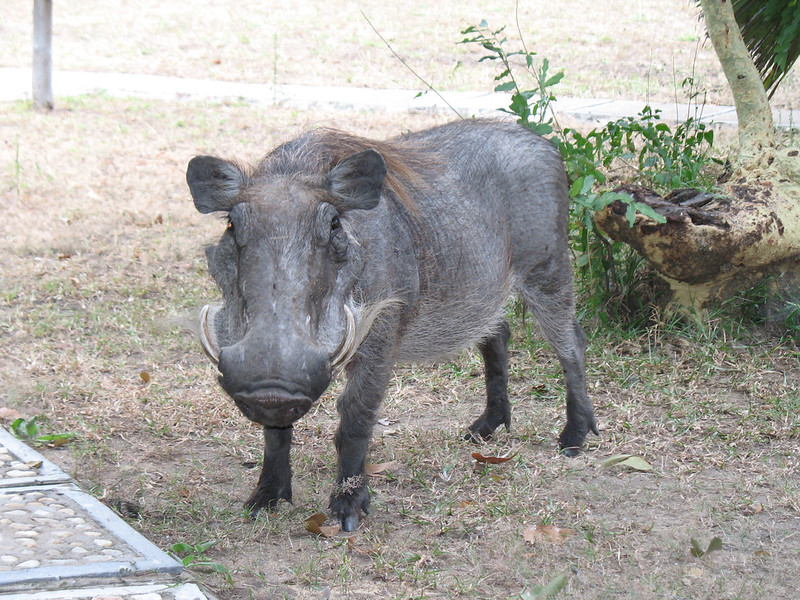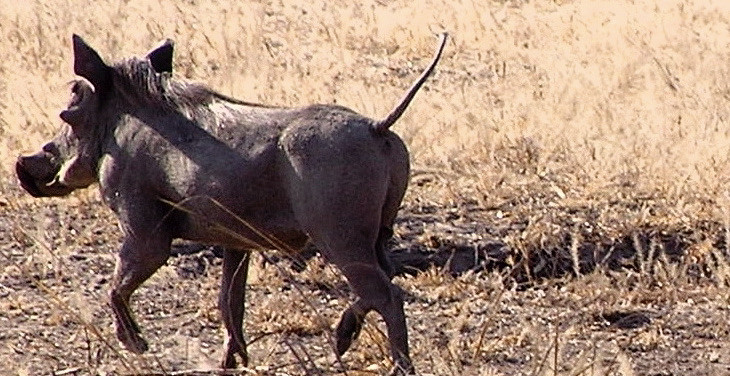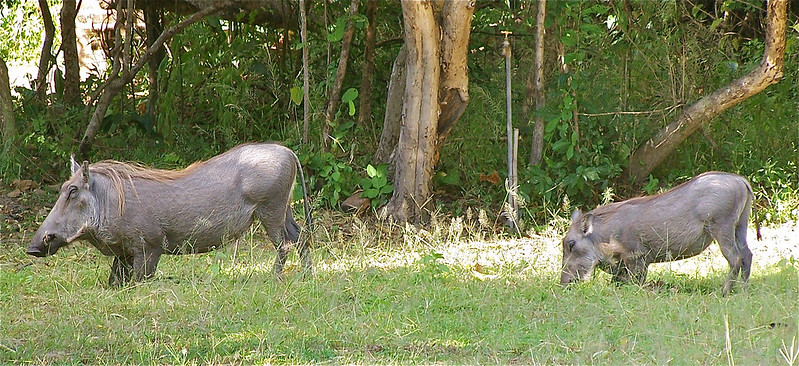Lilongwe, Malawi … Malawi has ten national parks and reports indicate the African warthog seems to like all of them. From a distance one might conclude they are looking at a western farm pig. A closer inspection, however, reveals subtle differences that make this wild animal a formidable challenger to any potential enemy. Its enemies include crocodiles, lions, cheetahs, and leopards. Even the very young are at risk from eagles and jackals. And of course, man is also a threat to the wart hog, although the agile hog has been able to avoid the endangered list.

Warthogs can be found in several nations in central and southern Africa including Malawi, Zambia, Zimbabwe, Mozambique, Tanzania, Kenya, Botswana, and South Africa’s Kruger National Park. The desert wart hog can be found further north on the continent.
Warthogs can put up a formidable defense with their curved horns that can grow to 25 cm (10 to 12 inches) or flee the scene at a speed as high as 40 km/h (25 miles per hour). They often weigh 45 to 70 kg (100 to 154 pounds.) for the female and 60 to 100 (133 to 220 pounds.) for the male. They live primarily in the grasslands and woods of the Savanna and spend most days searching for food. When they are eating, they bend forward on their front knees to reach the ground level food supply. This gives the appearance they are praying as they eat their meals.

Warthogs live in burrows they have acquired from other animals, (they don’t dig them themselves) and they eat primarily grass, plants, roots, and berries. They have excellent skills at adapting to their environment, one example is seen in their search for food. Warthogs generally forage for food in the early morning or late evening. However, if they live in areas where they are hunted by humans, they will shift the patterns to night hunting. The causes them less problems than it would for most animals because warthogs have very poor eyesight anyway. Whether in the light or in the dark they depend on their sense of smell and hearing more than on their eyesight.
The warthog has its name because of wart-like protrusions on its face. These, however, are not actually warts, but simple growths of skin that are a natural characteristic of this creature.

